The mid-range television segment is expanding rapidly, and TCL C75B demonstrates that it’s possible to get really solid equipment in this price category. This model is clearly designed with gamers in mind – the HDMI 2.1 port offers a lot of potential, providing VRR, ALLM, and impressive 144 Hz refresh rate in 4K (or 240 Hz in Full HD), which will certainly please both gaming and sports fans. The TV’s operation is pleasant and intuitive, mainly thanks to the Google TV system. While there may be minor stutters, the wealth of available apps and features more than compensates for this – practically everything we need is at our fingertips or even at the sound of our voice if we wish to talk to the remote in Polish. As for picture quality, TCL C75B also performs well. Thanks to the VA panel, it boasts quite good contrast, and the presence of Dolby Vision allows for enjoyable HDR effects, even if the brightness isn’t mind-blowing. Of course, it isn't without its flaws – despite the fast panel, there is some motion blur, and the lack of traditional features (like USB recording) may disappoint some users. Nevertheless, in its price category, the C75B is a very attractive option, especially for those looking for a screen designed for high-level gaming.
- Matching (Score)
- Our verdict
- TV appearance
- Where to buy
- Contrast and black detail
- HDR effect quality
- Factory color reproduction
- Color reproduction after calibration
- Smoothness of tonal transitions
- Image scaling and smoothness of tonal transitions
- Blur and motion smoothness
- Console compatibility and gaming features
- Input lag
- Compatibility with PC
- Viewing angles
- TV efficiency during daytime
- Details about the matrix
- TV features
- Apps
- Playing files from USB
- Sound
TCL C75B vs Samsung U8000F (IPS)
Direct compare
U8000F / U8092F
Available screen sizes: 55”

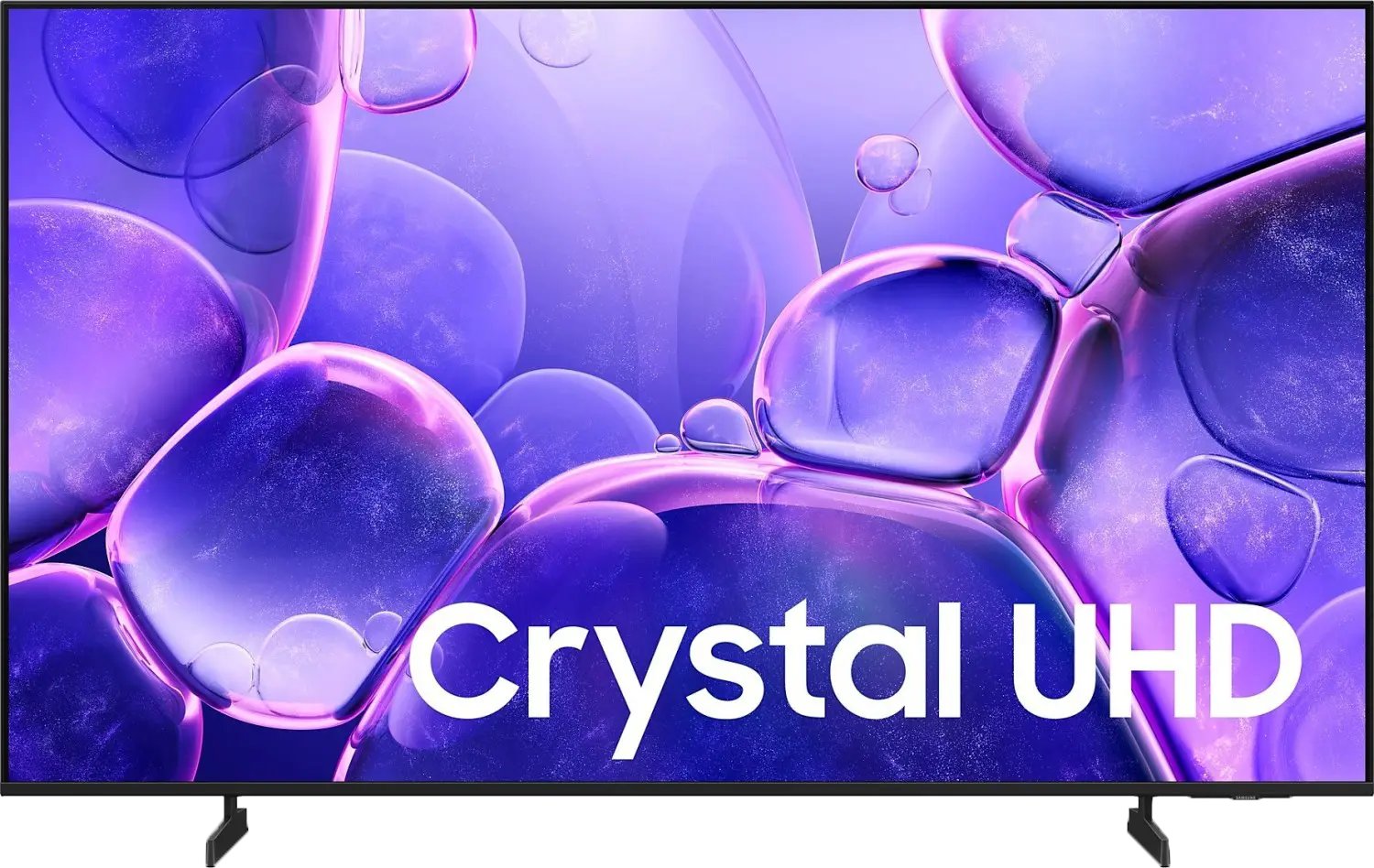
Panel type: LCD VA
Resolution: 3840x2160
System: Google TV
Model year: 2024
Complete the survey to find out the result

Panel type: LCD IPS
Resolution: 3840x2160
System: Tizen
Model year: 2025
Complete the survey to find out the result

Overall rating
6.7
5.3
Movies and series in UHD quality
6.3
4.8
Classic TV, YouTube
6.0
4.8
Sports broadcasts (TV and apps)
6.2
5.8
Gaming on console
8.4
6.3
TV as a computer monitor
7.6
6.0
Watching in bright light
4.9
3.4
Utility functions
7.7
5.6
Apps
10.0
8.3
Sound quality
6.6
5.7
Complete the survey to find out what fits your preferences
Advantages
Great TV for gamers - HDMI 2.1: VRR, ALLM, Game Bar
Very high refresh rate - 240Hz in FullHD and 144Hz in 4K
Very low input lag - 9ms
Advanced operating system - GoogleTV
Support for Dolby Vision, HDR10+
Decent black levels thanks to VA panel
Advanced Smart system: Tizen
Good viewing angles (IPS Matrix)
Great for working with text - excellently displays fonts
Low input lag
Basic features for gamers - VRR and ALLM
Disadvantages
Limited brightness (350 cd/m²), making it difficult to watch in bright rooms
Issues with the smoothness of the Google TV system
Missing traditional features like USB recording or PIP
Average response time of the panel causing motion blur
Low brightness
Very poor black level and contrast (IPS panel)
Inferior appearance compared to its predecessor
Infrared remote control
Our verdict
The U8000F is a very basic television that may find its buyers among those looking for the cheapest Samsung 4K with Smart TV. And that is exactly its purpose. Thanks to the Tizen system, this model offers quite a bit in terms of smart features – the number of applications and possibilities may catch the attention of those who want a reasonably smart device at the lowest price possible. When it comes to picture quality – it's average, which isn't surprising in this class. Nonetheless, there are a few upsides: quite decent viewing angles will work well for traditional TV viewing from different parts of the room, and the basic features for gamers (like VRR and ALLM) may be enough for typical "Sunday" gamers. The PC mode also deserves a mention – the television handles font display very well, so it can also serve as a cheap monitor. Of course, this is not a model that can be recommended to everyone "sight unseen." But if someone is looking for a cheap Samsung with 4K resolution and a solid Smart system, then the U8000F is just that kind of device.
TV appearance




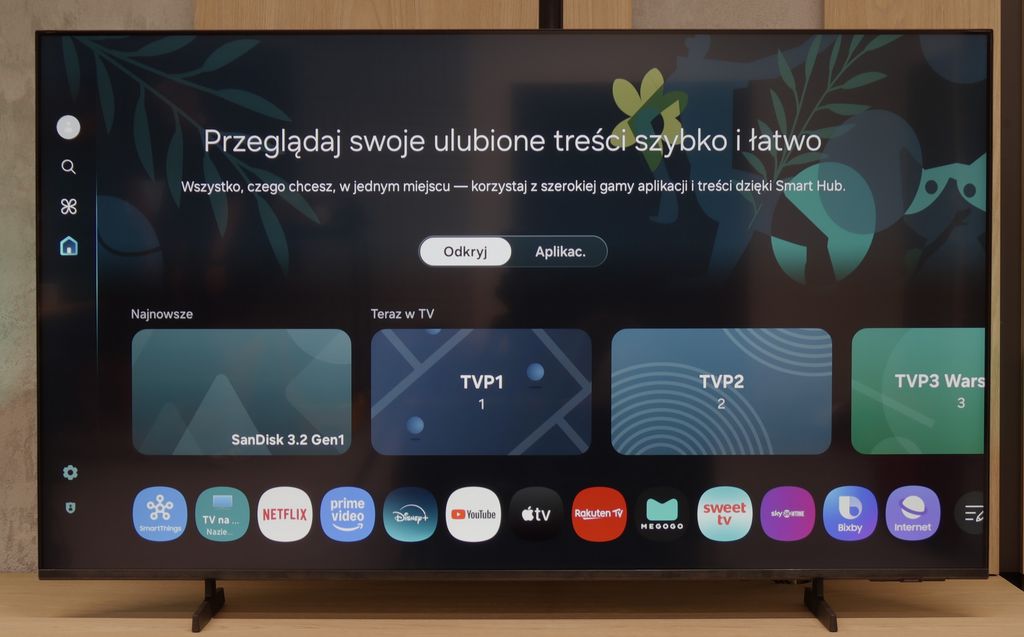
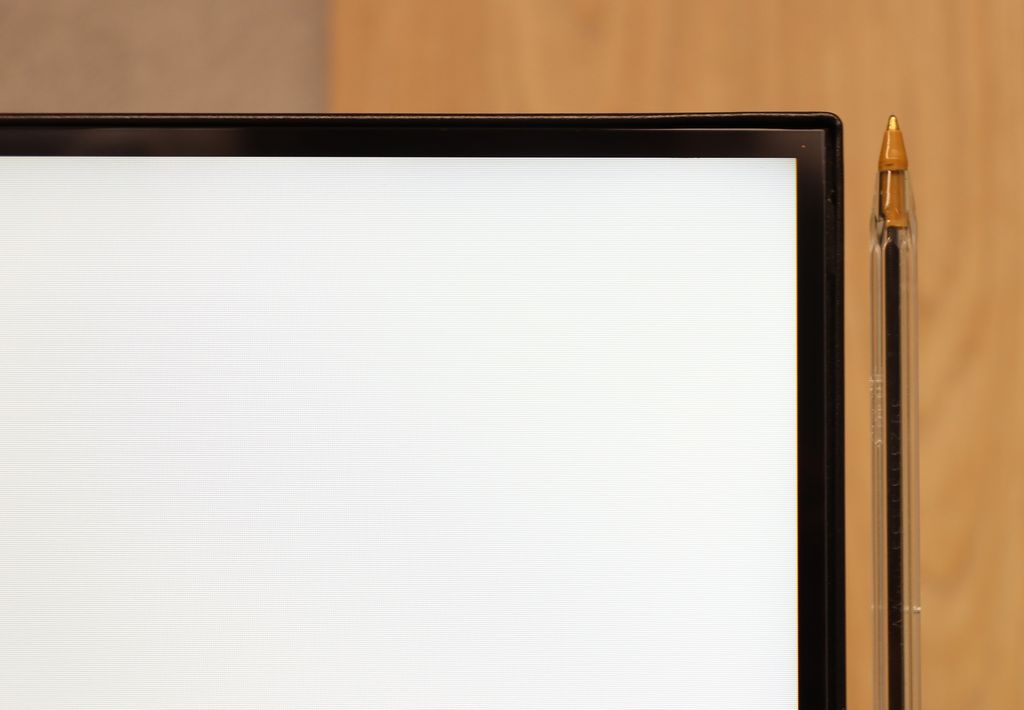

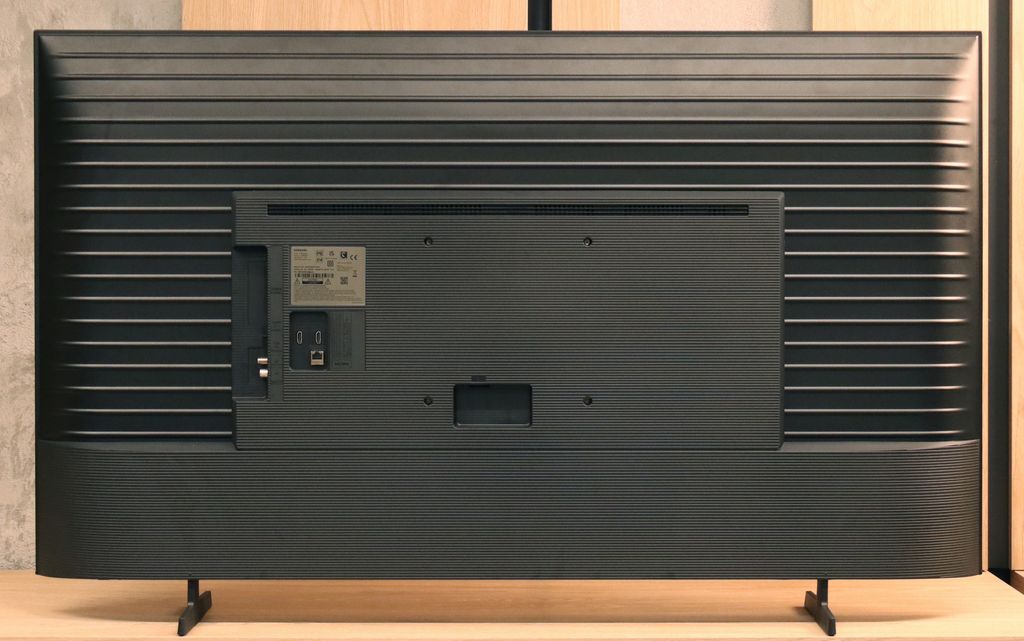
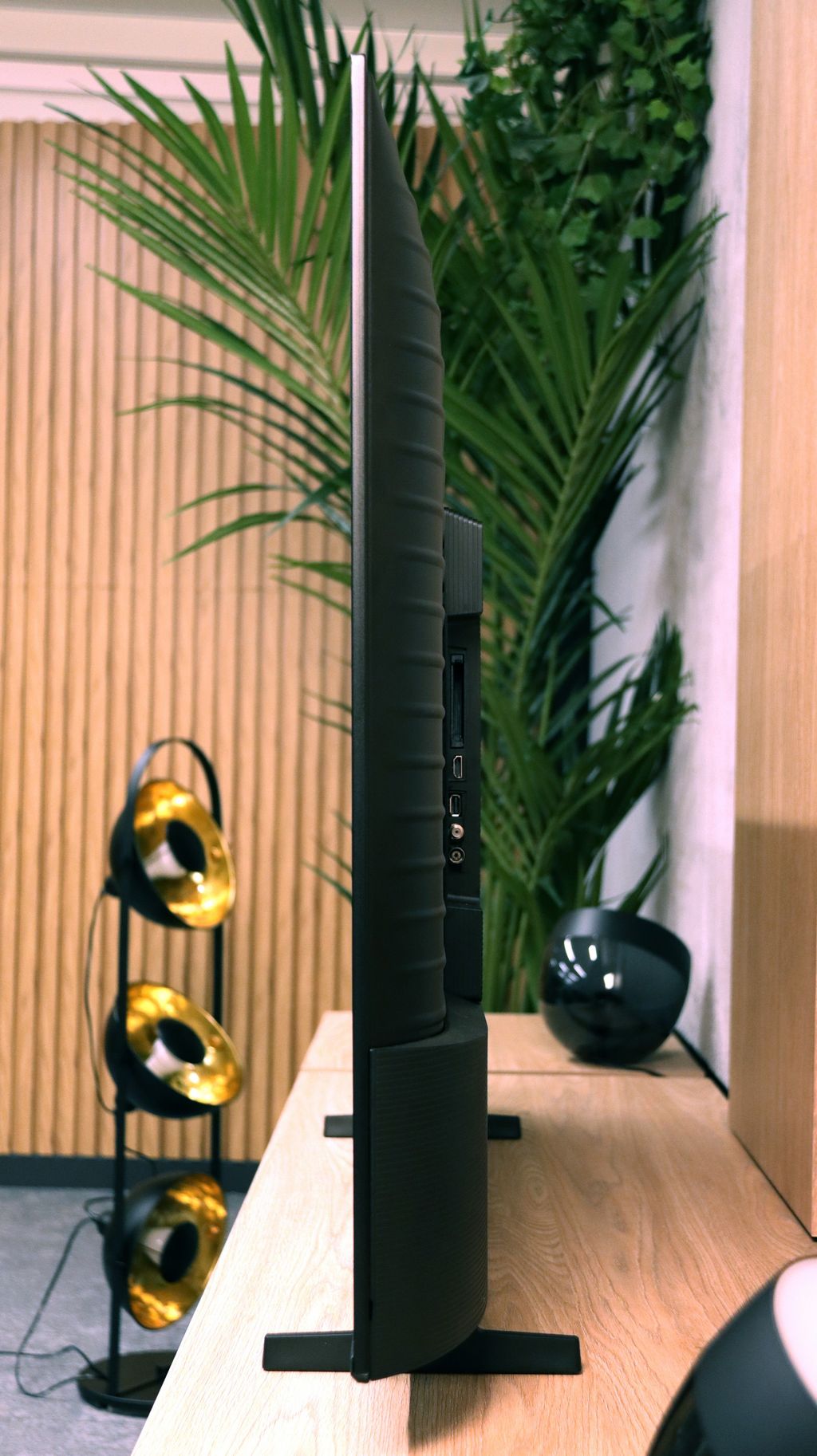
Contrast and black detail
5.9/10
1.1/10
Local dimming function: No
Local dimming function: No
Contrast:

Result
5,400:1

Result
5,700:1

Result
6,600:1

Result
6,250:1

Result
4,100:1

Result
900:1

Result
800:1

Result
700:1

Result
700:1

Result
650:1
Halo effect and black detail visibility:

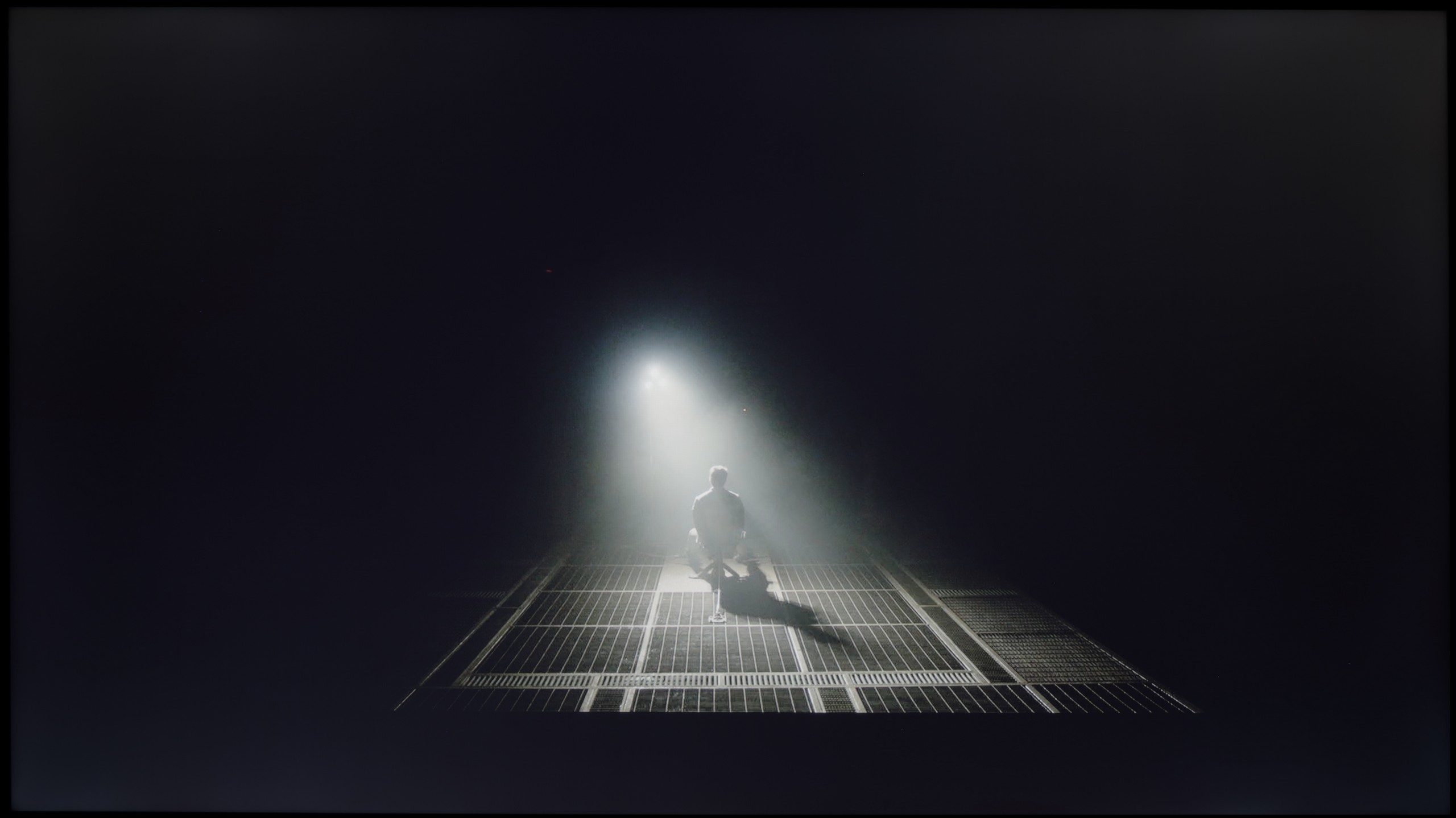
The TV we tested, TCL C75B in size X," is equipped with a VA panel, which naturally provides quite decent contrast results – and that’s what we observed during our tests. On each test pattern, the TV achieved a contrast level of around 5500:1. This is a result that can be considered very good in this price category. The black in this model performs really well, though of course, it’s far from perfect.
Due to the C75B belonging to the mid-range segment, we won’t find local dimming technology here. This is particularly noticeable in more demanding scenes, such as those from the film Sicario 2, where we noticed that the black takes on a navy hue instead of a pitch-black. This limitation of panels without local dimming can be particularly evident in evening viewings with the lights off, when dark elements of the image are more pronounced. It's worth keeping this in mind when choosing a TV in this category, especially if we care about the best quality of black while watching movies at night.
Samsung U8000F, or more precisely the U8092F model in the 55-inch version, is equipped with an IPS panel. Let’s be honest – this is not the best choice when it comes to properly displaying blacks and contrast. The results in this category are simply poor. The contrast is abysmal, and watching dark scenes with any kind of “cinematic” effect is nearly impossible. Additionally, the fact that the TV lacks local dimming doesn’t help, making it difficult to achieve better results. The only thing that deserves praise is the quite decent uniformity of the panel – but that’s more of a minor consolation. Overall, it’s not good. If you care about deep blacks and reasonable contrast, it’s definitely better to go for a variant with a VA panel, which performs significantly better in this particular series.
HDR effect quality
5.1/10
2.7/10
Luminance measurements in HDR:

Result
368 nit

Result
382 nit

Result
429 nit

Result
404 nit

Result
425 nit

Result
191 nit

Result
224 nit

Result
241 nit

Result
79 nit

Result
234 nit
Scene from the movie “Pan” (about 2800 nits)


Scene from the movie “Billy Lynn” (about 1100 nits)

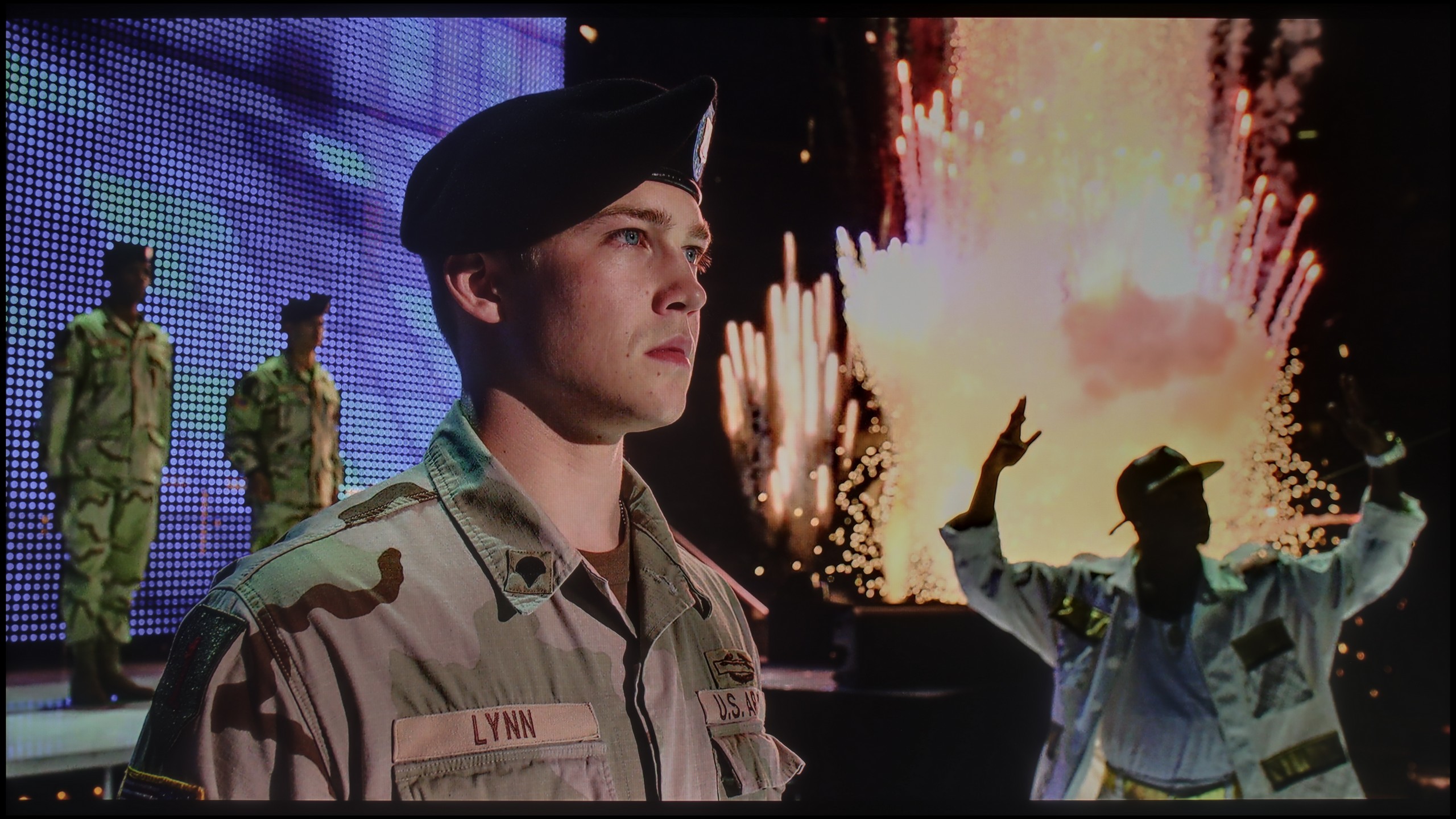
Static HDR10


Dynamic: Dolby Vision
Dynamic: HDR10+


HDR luminance chart:
Samsung U8000F (IPS)
Luminancja HDR
Luminance of RGB colors
TCL C75B
Luminancja HDR
Luminance of RGB colors
During our brightness test, the TCL C75B "spat out" around 380 nits of brightness. We recorded similar results while watching most of the films we tested. These can be considered average – the TV performs decently in this segment, but around 400 nits is definitely too low to fully experience the magic of HDR effects. Of course, such results are better than those of budget models, which can achieve nearly half the brightness values. However, for HDR enthusiasts seeking stronger lighting effects and greater realism, the C75B may prove insufficient. On the plus side, it's worth mentioning the coverage of the DCI-P3 colour gamut at 95%. This is a very good result that easily suffices to enjoy a wide range of colours in content available on popular streaming platforms. Vivid and rich colours are definitely a strong point of this model.
Better doesn't mean good – and that's exactly how you can sum up the capabilities of the U8092F when it comes to displaying bright movie scenes in HDR mode. The brightness of the panel is just under 250 nits, which is definitely too low to enjoy any light effects. An interesting situation was observed during measurements of the fourth scene from the movie Sicario 2 – the television clearly dimmed the entire screen in an attempt to achieve better black levels (which still remain weak). One could even suggest that the device employs some form of "global dimming," but unfortunately – the effects are still very poor. To make matters worse, the television does not support a wide colour gamut – the coverage of the DCI-P3 space is around 80%, so don’t count on truly vibrant colours. The HDR image here looks more like slightly brightened SDR, and that’s the approach we would suggest you stick to when it comes to this television.
Factory color reproduction
7.3/10
6.5/10


Factory Mode
After calibration
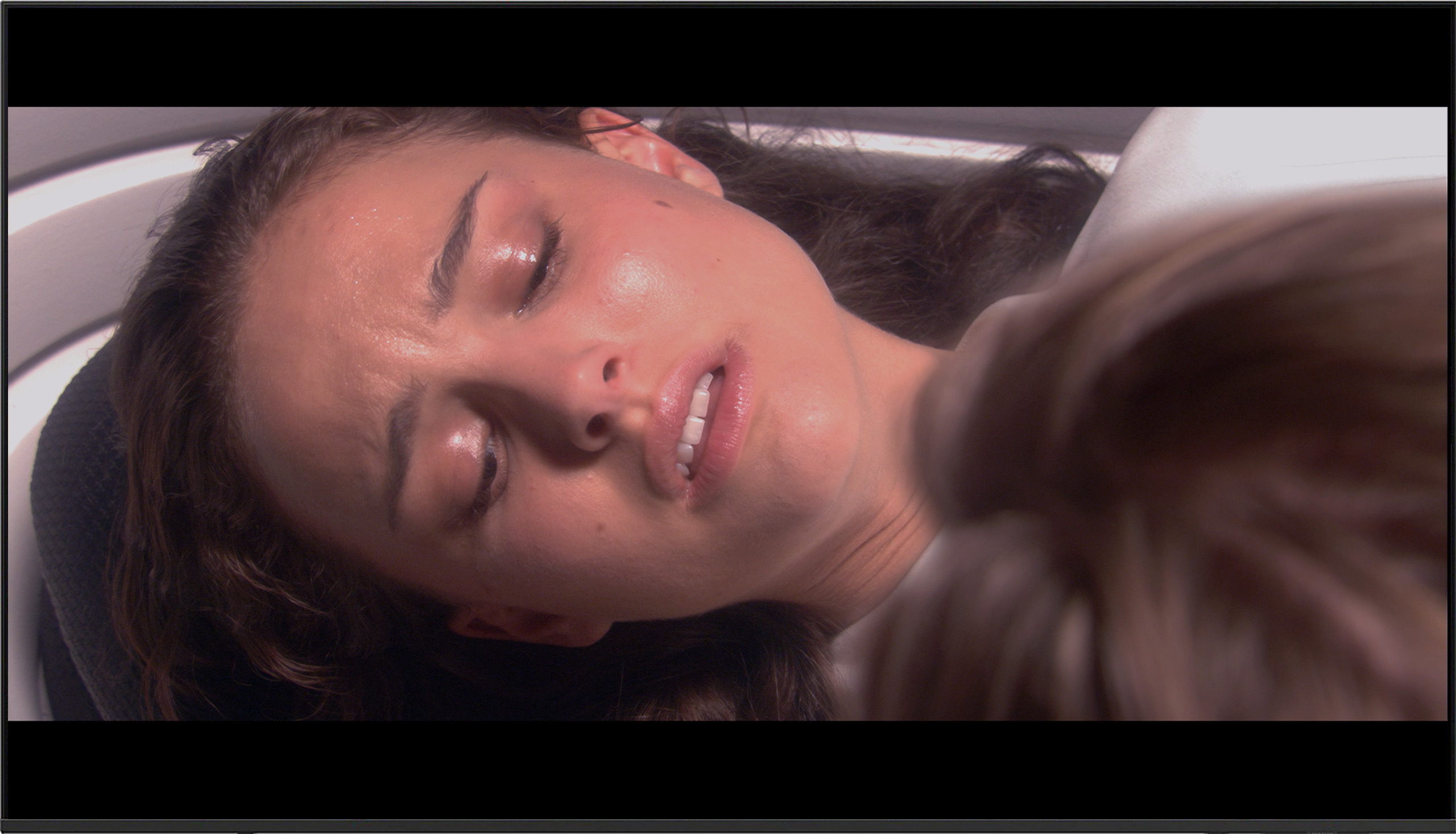
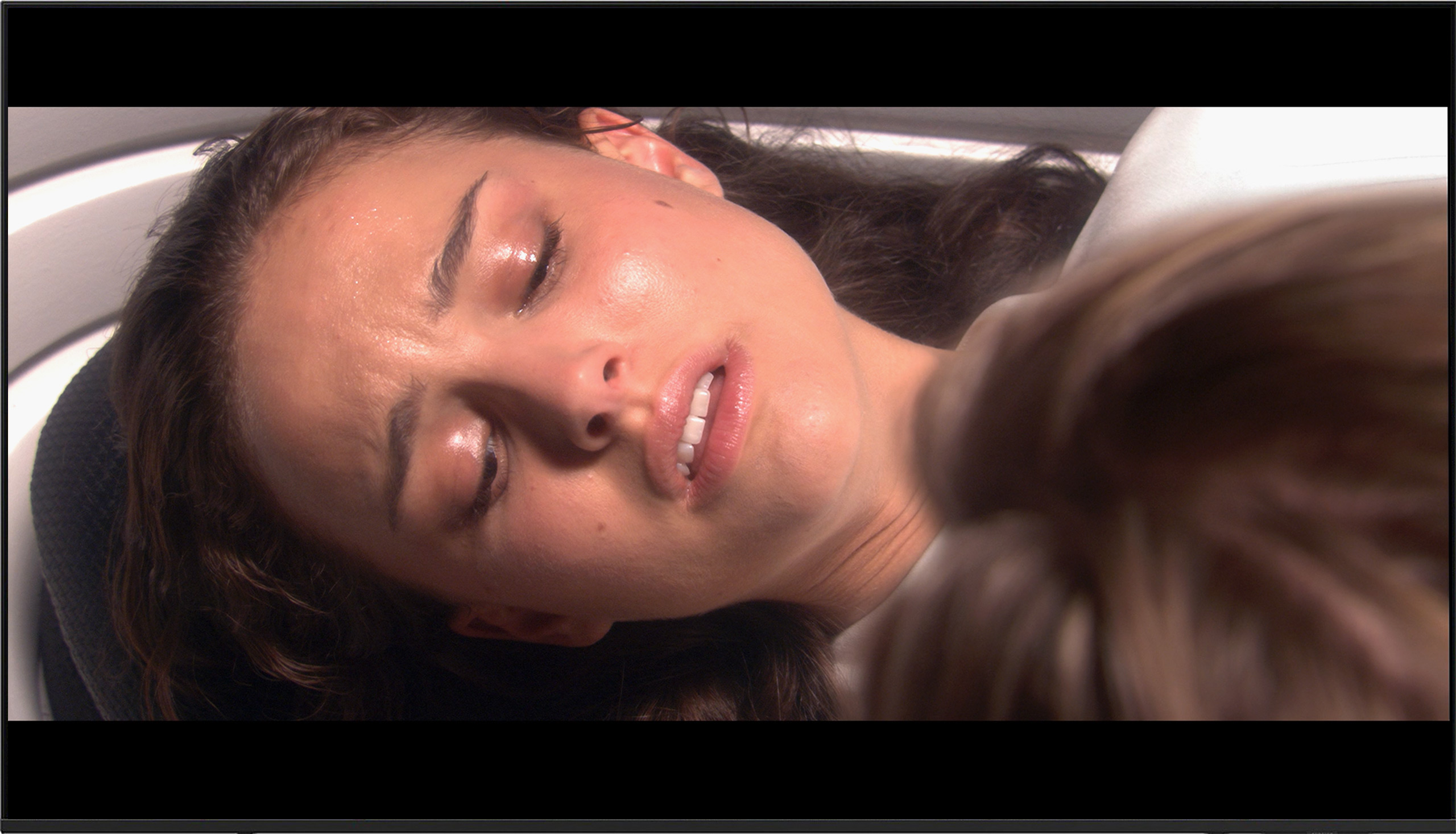
Factory Mode
After calibration
TCL C75B offers various picture modes, but in our opinion, the best choice is the “Film” mode. Although its settings are quite decent, the TV struggles with certain colour reproduction issues. In tests, we noticed that the image had a noticeably pinkish hue compared to what could be considered correct. This effect was particularly evident in skin tones, which appeared unnaturally flushed. The main culprit of this phenomenon turned out to be the white balance, characterised by an excess of blue and red in both HD and 4K HDR materials.
An additional problem was the way brightness was reproduced. The gamma, which is responsible for the visibility of details in darker materials, was definitely boosted, causing details in the darkest parts of the screen to be invisible, disappearing into complete black (e.g., the bottom part of the screen in the comparison image - the area around the actress's ear). The situation was similar on the EOTF curve, which was below the correct value, suggesting that a similar issue may be encountered in 4K HDR content.
Thanks to our experience and the appropriate tools, we decided to take matters into our own hands and check how much could be extracted from this model after professional calibration. The details are described in the next section.
Samsung U8000F has been tested in the best possible built-in picture mode on the television, which is Filmmaker Mode. This mode should – at least in theory – provide a cinematic, reference image without unnecessary enhancements. For SDR content (mainly HD/SD), the television presented itself surprisingly well out of the box. White balance errors hovered around a value of 3, which is roughly on the edge of perceptibility. The only criticism could be directed at brightness management – the gamma chart showed a slight tendency to brighten or darken certain sections, but overall it performs quite well for this price segment.
Unfortunately, it looks much worse in HDR mode. Although the white balance was not terrible, the television had significant colour errors – particularly evident on the Color Checker chart, where almost every sample fell outside the target point. The image in HDR simply looks unnatural, and the colours can be shifted, muted, or too cool. This largely stems from the fact that U8000F does not support a wide colour gamut (DCI-P3). The television is physically unable to display correct colours in the HDR standard – and this is unfortunately felt in every more demanding material.
Color reproduction after calibration
8.2/10
7.5/10

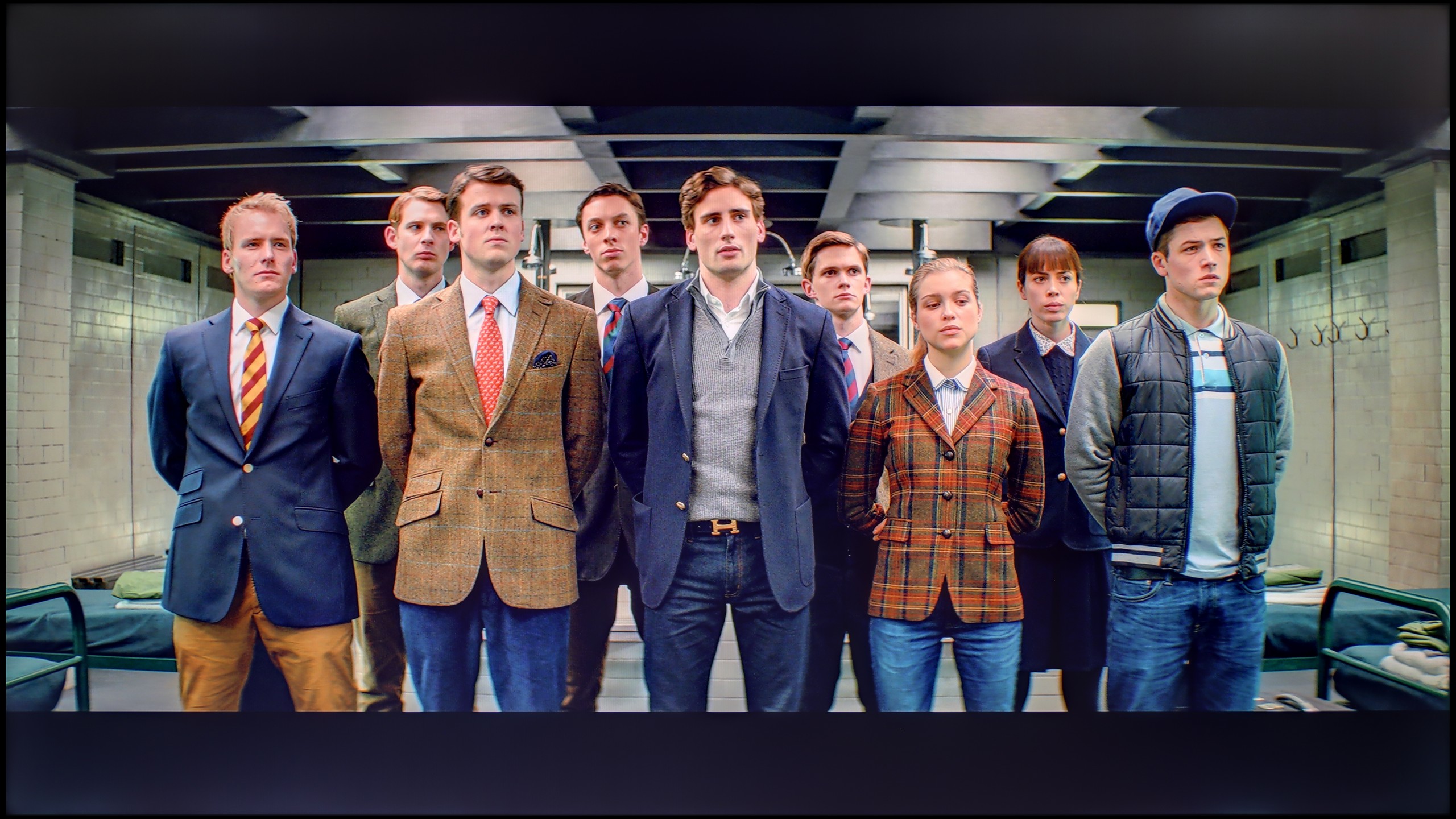


After calibration, TCL C75B has clearly improved when it comes to colour reproduction. Although the TV doesn't offer too many options for adjusting the white balance, we managed to improve its settings quite a bit. As a result, the image is no longer overly pink, and the colours now look much more natural and harmonious.
The gamma jump that was previously an issue hasn't completely disappeared, but we were able to significantly reduce it. This has made details in dark scenes more visible – both in HD and 4K HDR content.
Unfortunately, the lack of local dimming is still noticeable. The 'blooming black' effect remains, but that's a limitation of the display itself. Still, the colours post-calibration look significantly better, and the image is much more pleasant to watch.
Even though the U8000F already offered a fairly good picture in SDR straight out of the box, we managed to tweak it a bit more. We were able to remove a slight purple tint and adjust the gamma to a more reasonable level. However, the television still tends to over-brighten the smallest and brightest parts of the image – the gamma chart shows a characteristic "dip" that is hard to fully straighten out.
Unfortunately, the situation looks worse in HDR. It's difficult to talk about any significant improvement here – the television simply isn't designed for HDR content. We tried to adjust the picture in the advanced settings, but despite our efforts, the colour errors remained quite noticeable – a delta E above 7 is already significantly visible deviations. It's a bit unfortunate, but that's the charm of a budget build. In SDR, the U8000F performs reasonably, whereas HDR is simply not its league.
Smoothness of tonal transitions
8.2/10
9/10





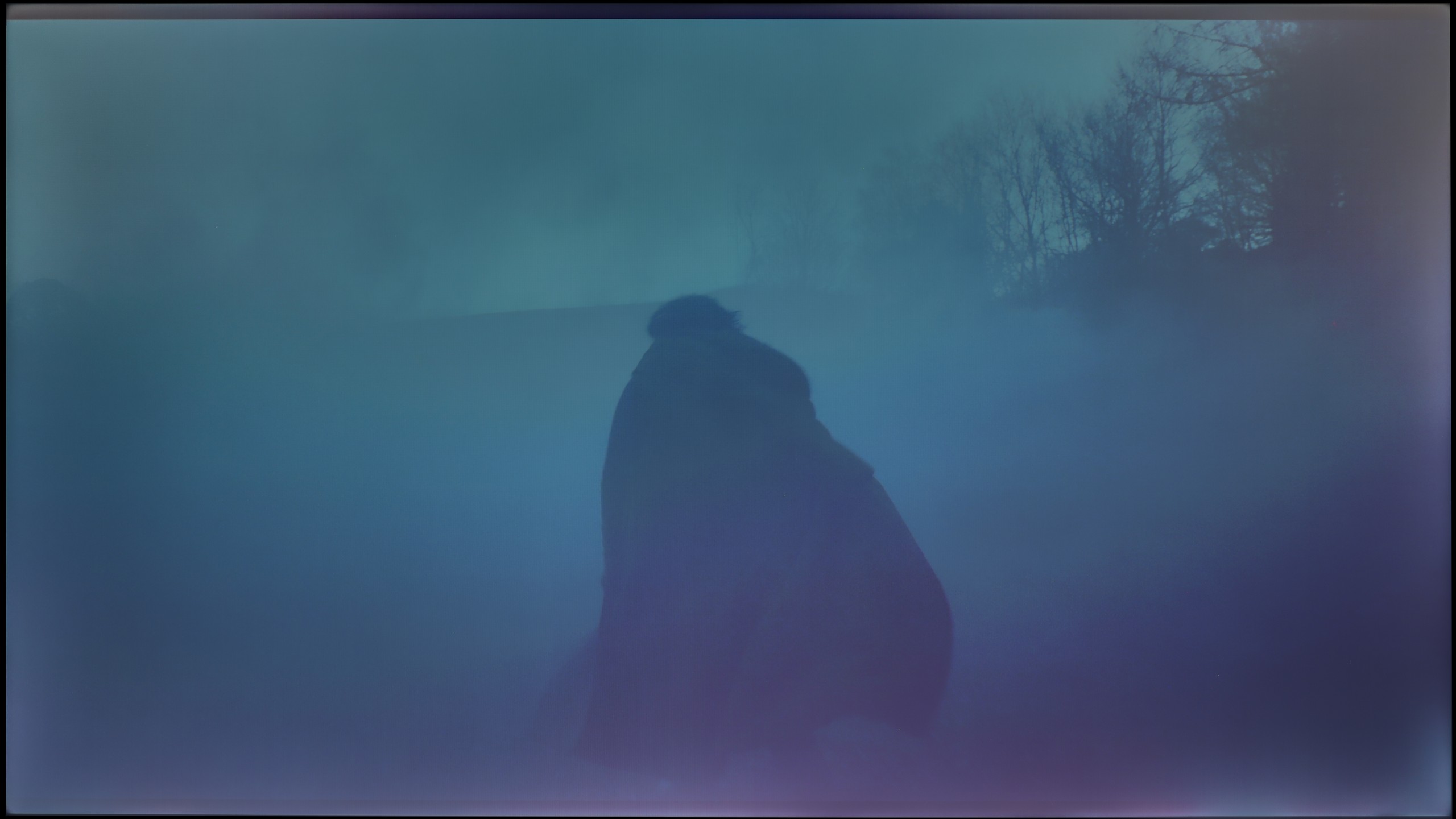






When it comes to tonal transition fluidity, TCL C75B performs really well. It particularly excels in gradation of the darkest colours – here the television does not disappoint and presents a high-quality image.
Some imperfections can be noticed in the brightest areas of the screen, such as in a scene from the film Kingsman (sun in a blue sky). Nevertheless, the final effect should satisfy the vast majority of users.
Another important thing to pay attention to when assessing image quality is the smoothness of tonal transitions – that is, how the television handles blending colours and shades. And here the Samsung U8092F performs... almost perfectly. On the tested images, there are no noticeable banding transitions, no issues with colourful gradients, and the whole picture isn't artificially sharpened, which unfortunately happens with many televisions in this class. The image looks natural and very clear. We noticed minimal problems with the brightest scenes, but that's more of a nitpick that only a very trained eye would catch.
Image scaling and smoothness of tonal transitions
5/10
5/10
Smooth transition function

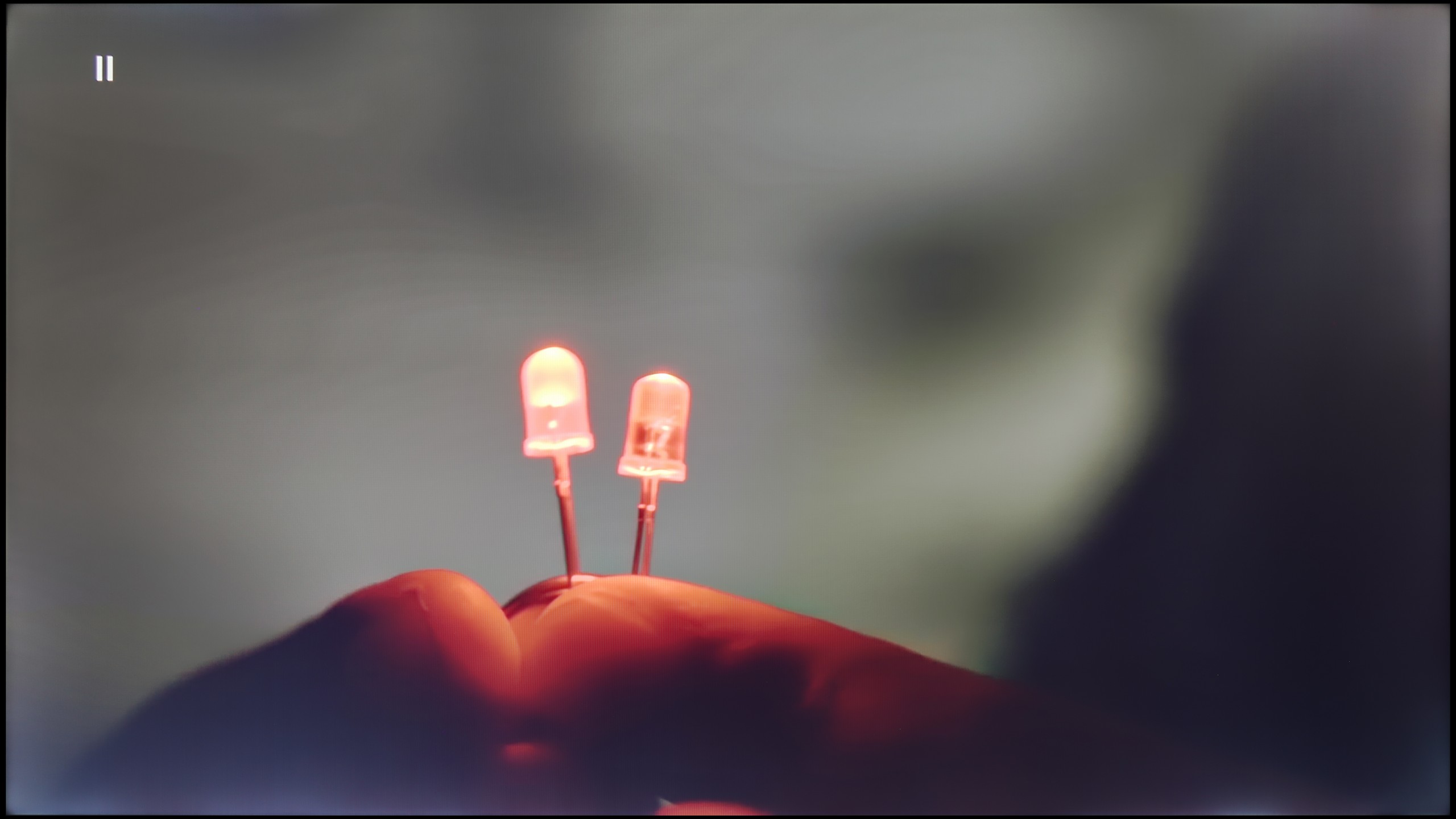
Image without overscan on the SD signal


TCL C75B has a feature for smoothing tonal transitions, but unfortunately, we cannot praise it. Regardless of the selected level – low or high – tonal transitions in older materials remained visible, as if the feature wasn’t working at all. It’s hard to say anything positive about it, as in practice it seems completely useless.
Image scaling is better. The TV handles it quite decently, although on thinner elements, like branches in the background, you can see slight jaggedness. However, this is not something that significantly hinders everyday viewing.
Unfortunately, a bigger problem turned out to be overscan, or cropping of the image edges. In our tests, it happened that news ticker or other elements close to the edge of the screen were cut off. This is definitely something to pay attention to, especially if we use the TV for watching news programs or content with text on the screen.
When it comes to how the Samsung U8000F handles lower quality materials, we must admit that Samsung has made progress compared to its predecessor from last year – the DU7192 model, which theoretically occupies the same place in the offering.
This year's model has been equipped with a function to improve the smoothness of tonal transitions, which has been implemented significantly better than last year. Yes, the TV still uses quite strong algorithms that can distort details or remove film grain, but even so – it can be confidently said that it operates effectively.
However, not everything has gone perfectly. The U8000F has noticeable issues with slight frame stuttering when watching very old content in very low resolution. If someone plans to play their old VHS tape, they must be aware that the picture may appear slightly "choppy".
Blur and motion smoothness
7.3/10
6/10

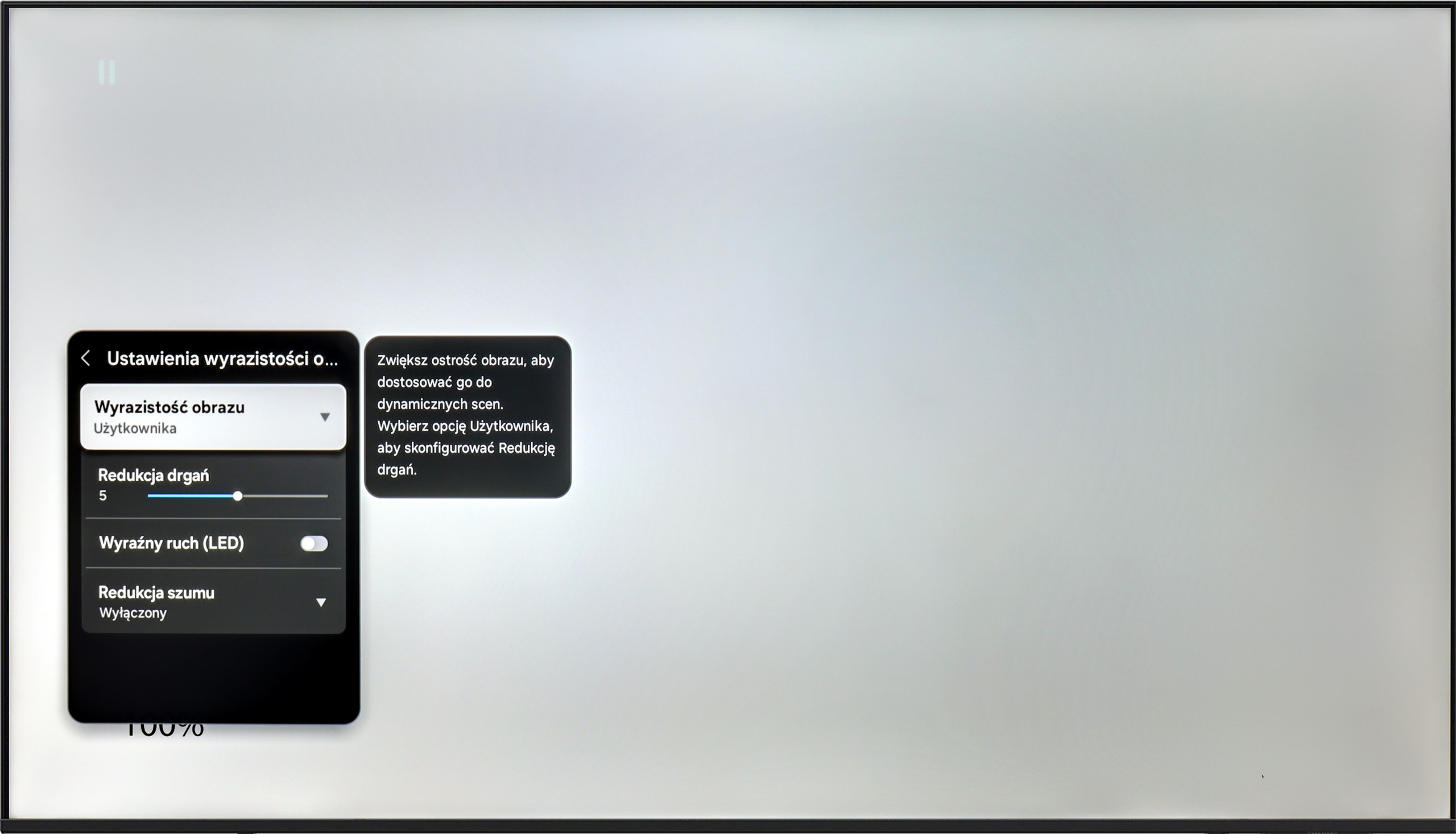
Blur (native resolution, maximum refresh rate):




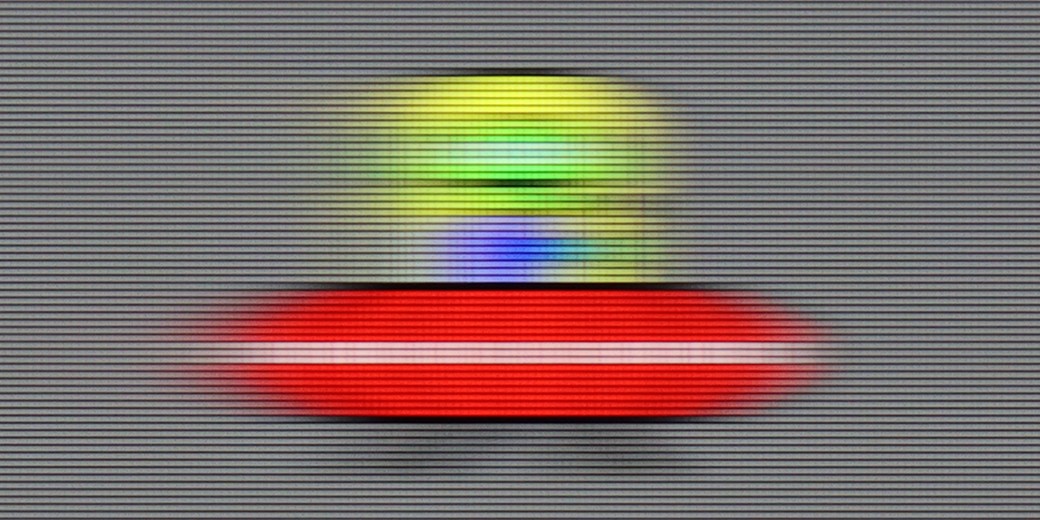

TCL C75B definitely has something to offer gamers. The television is equipped with a panel that can display images with a refresh rate of 144 Hz in 4K, and even 240 Hz in Full HD. These are really impressive results, especially for a model from the budget range.
On top of that, there are features for improving smoothness and reducing motion blur in films. The "Motion" option allows for precise adjustment of the effect on a 10-point scale, providing significant personalisation possibilities – everyone can set the smoothness to their liking.
Samsung U8000F is equipped with a 60 Hz panel, so right from the start, it's clear that we shouldn't expect miracles. This is simply the standard in this class – sufficient for everyday viewing, but without any fireworks.
The television offers one motion smoothing slider – a feature called “Motion Blur Reduction”, which allows us to adjust the smoothness of the image in movies. Higher settings provide a more “theatrical” and smoothed effect, while lower ones maintain the original character of the film with a slight 24p effect. An interesting feature is “Clear Motion LED”, or BFI mode – which inserts black frames between the image frames to enhance motion clarity. However, in practice, the screen flickers significantly when it's activated, and it's better viewed as an experiment rather than something that truly enhances gaming comfort.
Console compatibility and gaming features
9.8/10
4/10
- ALLM
- VRR
- VRR range48 - 240Hz48 - 60Hz
- Dolby Vision Game Mode
- Correct implementation of HGIG
- 1080p@120Hz
- 1440p@120Hz
- 4K@120Hz
- Game bar

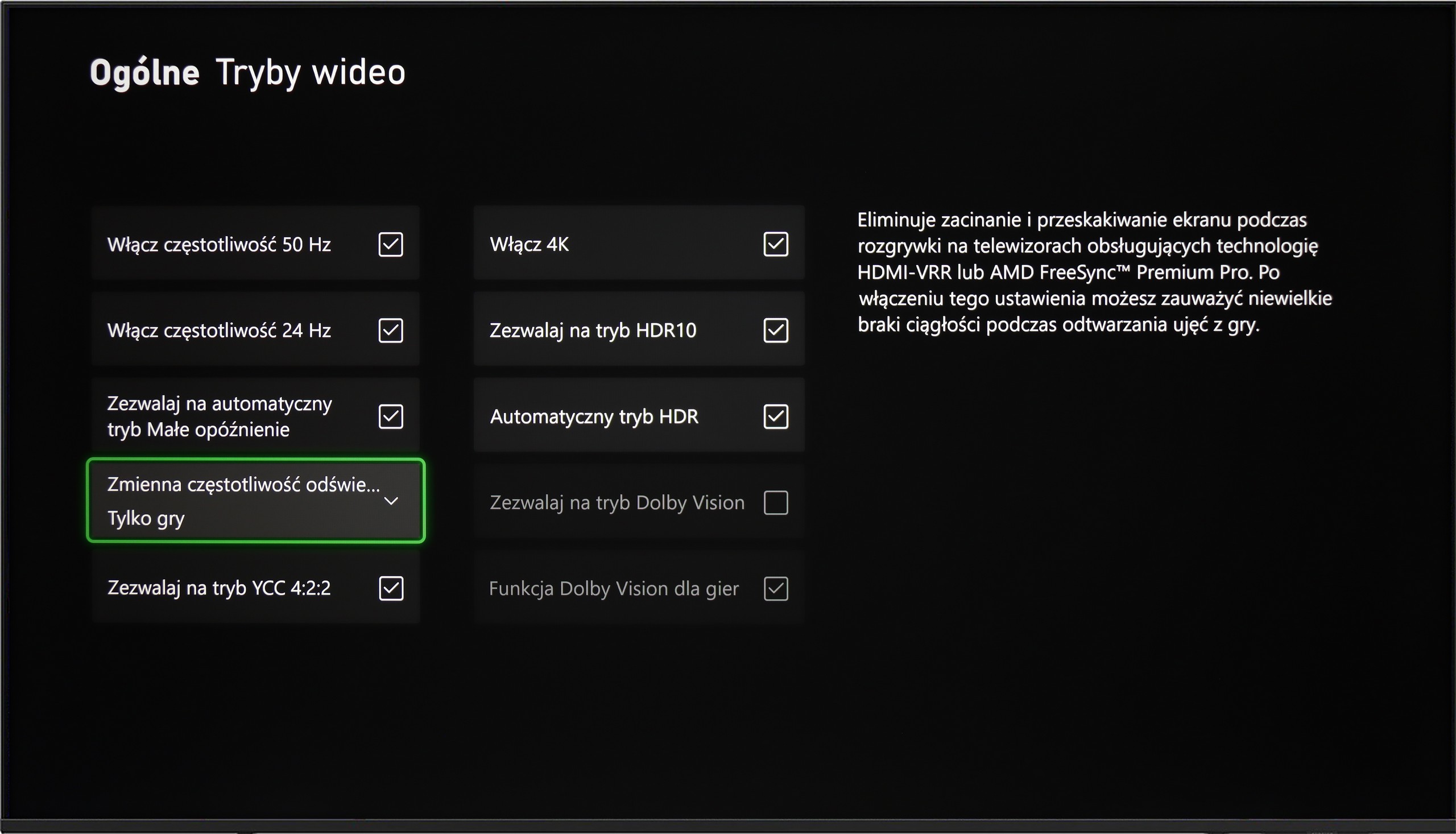



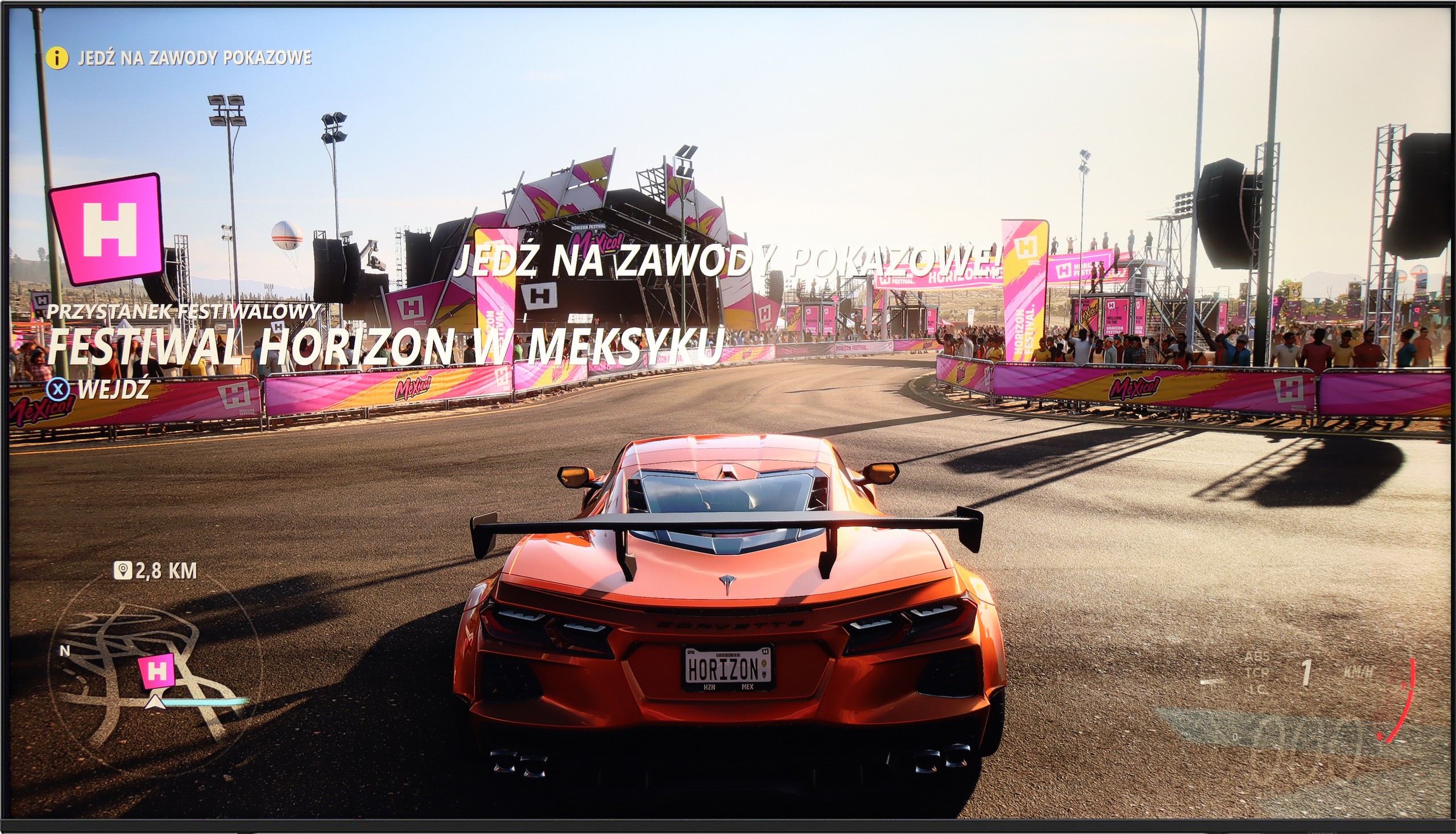


TCL C75B is undoubtedly a television designed with gamers in mind. It has almost everything needed for even the most demanding console users. With the implementation of full bandwidth HDMI 2.1, the TV supports features like ALLM (automatic low latency mode) and VRR (variable refresh rate) – operating within the full capabilities of the TV, up to 240 Hz in Full HD resolution.
Additionally, the television supports advanced HDR technologies, including Dolby Vision and HGiG, which allows for even better detailing in HDR-optimised games. C75B is also equipped with a very convenient interface for gamers in the form of Game Bar, where you can check all key parameters such as refresh rate, input lag, or picture settings – all just a click away.
In one sentence: C75B is a great choice for gamers, offering a wide range of features that fully enable enjoyment of the capabilities of modern consoles and games.
Samsung U8000F offers a basic set of features for gamers, which may still be sufficient for less demanding users. It has an automatic game mode – when a game is launched on the console, the TV automatically switches to low latency mode, which significantly improves response time. It also includes a VRR function, or variable refresh rate, which works within the range of 48 to 60 Hz. This means that both Xbox and PS5 won't produce the "tearing" effect – as long as we stay within this range.
And unfortunately, that's about it for the advantages. Additional features like Game Bar or higher refresh rates are reserved for higher models of Samsung’s 2025 line. In theory, the TV also supports the HGiG function, which should adjust the HDR image to the intentions of game developers. Unfortunately – although this function appears in brochures and store materials – its setup on the Xbox console turned out to be... impossible in practice.
Input lag
9.8/10
10/10
SDR
HDR
Dolby Vision
The input lag on the TCL C75B is something that truly impresses. With a refresh rate of 144 Hz, the lag is just 9 ms, making the TV's response to our actions on the controller or keyboard practically instantaneous. For 60 Hz, the result is 19 ms – it's not a record low value, but it still falls within a range where the lag is practically unnoticeable during gaming. One could say that the difference is hardly felt, which makes this TV a good choice even for more demanding gamers.
The Samsung U8092F performed phenomenally well in our input lag tests. Regardless of resolution or mode – the results were very low, which is quite impressive for this price segment. Therefore, it’s safe to say that gaming on this TV will not cause frustration due to significant delays between what we do on the controller and what we see on the screen. For most gamers, even the more demanding ones, this result should be more than satisfactory.
Compatibility with PC
7.6/10
6/10

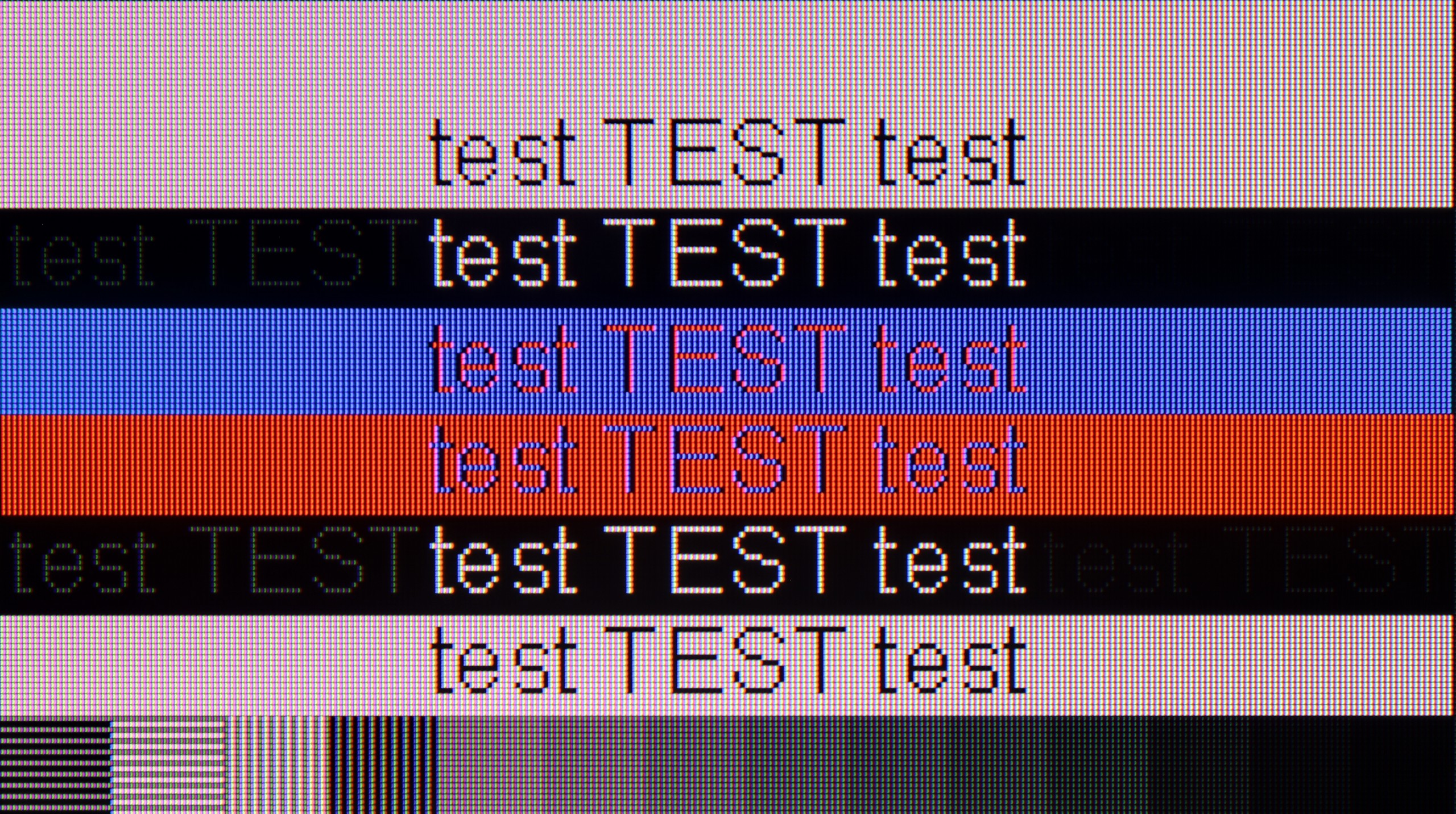
TCL C75B is quite a good choice for connecting to a computer. With high refresh rates, low input lag, and G-Sync support, the television performs exceptionally well in games – both fast-paced and more demanding ones. The image is smooth, and the response to our actions is quick, which gamers will undoubtedly appreciate.
For office work, the television also holds up well. Text is readable, although on a dark background some imperfections can be noticed – some fonts appear as if they are missing pieces of vertical lines. This may be distracting if we work a lot with documents or text editing. However, if the computer is mainly used for gaming or watching movies, TCL C75B will easily serve its purpose as a monitor. It’s a versatile device that can handle most applications.
Working on the computer using this television is a real pleasure. The Samsung U8092F supports chroma 4:4:4, and thanks to the arrangement of the sub-pixels in the IPS panel, the readability of fonts – regardless of colour or size – is very, very good. The television is also suitable for occasional gaming on PC, mainly due to the low input lag. However, one must keep in mind that the G-Sync feature does not work on this model, which is strange because VRR worked without any issues when it came to the console.
Viewing angles
2.7/10
7/10
The viewing angles on the TCL C75B are, unfortunately, very poor. This is a typical compromise with VA panels – better blacks at the expense of off-angle visibility. The picture quickly loses quality when viewed from the side, which is the complete opposite of what IPS panel televisions offer. If we plan to watch the TV mainly head-on, this won't be a big problem. However, with a larger number of viewers sitting at different angles, the picture quality may disappoint.
The viewing angles on the Samsung U8092F are very good – as is typical for an IPS panel. The image doesn’t lose much in terms of brightness or colour saturation, even with a greater deviation from the axis. Of course, it’s not on the level of organic screens – but it’s entirely sufficient for comfortably watching the image at an angle, for example, from the side of the couch.
TV efficiency during daytime
4.9/10
3.4/10

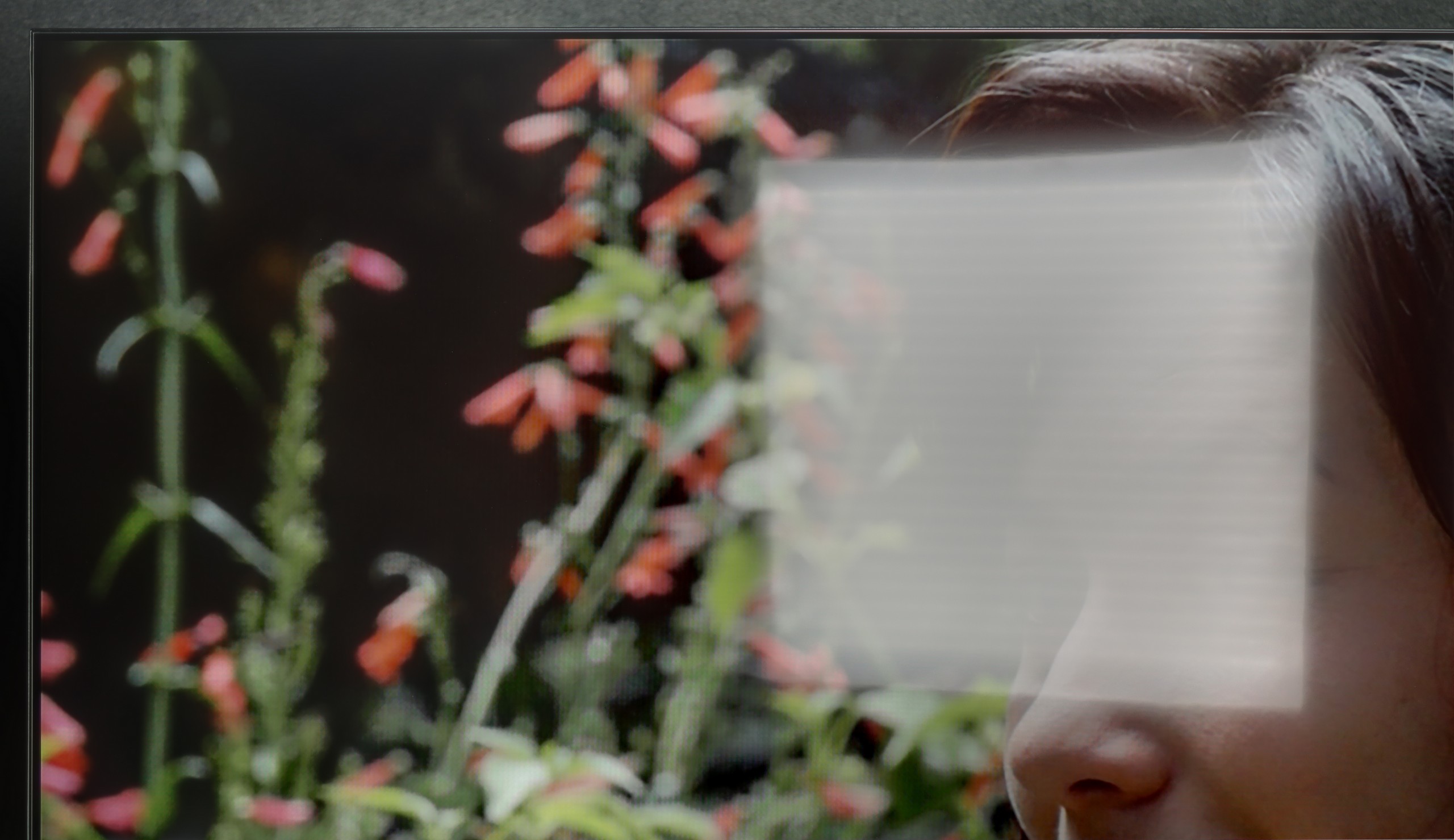

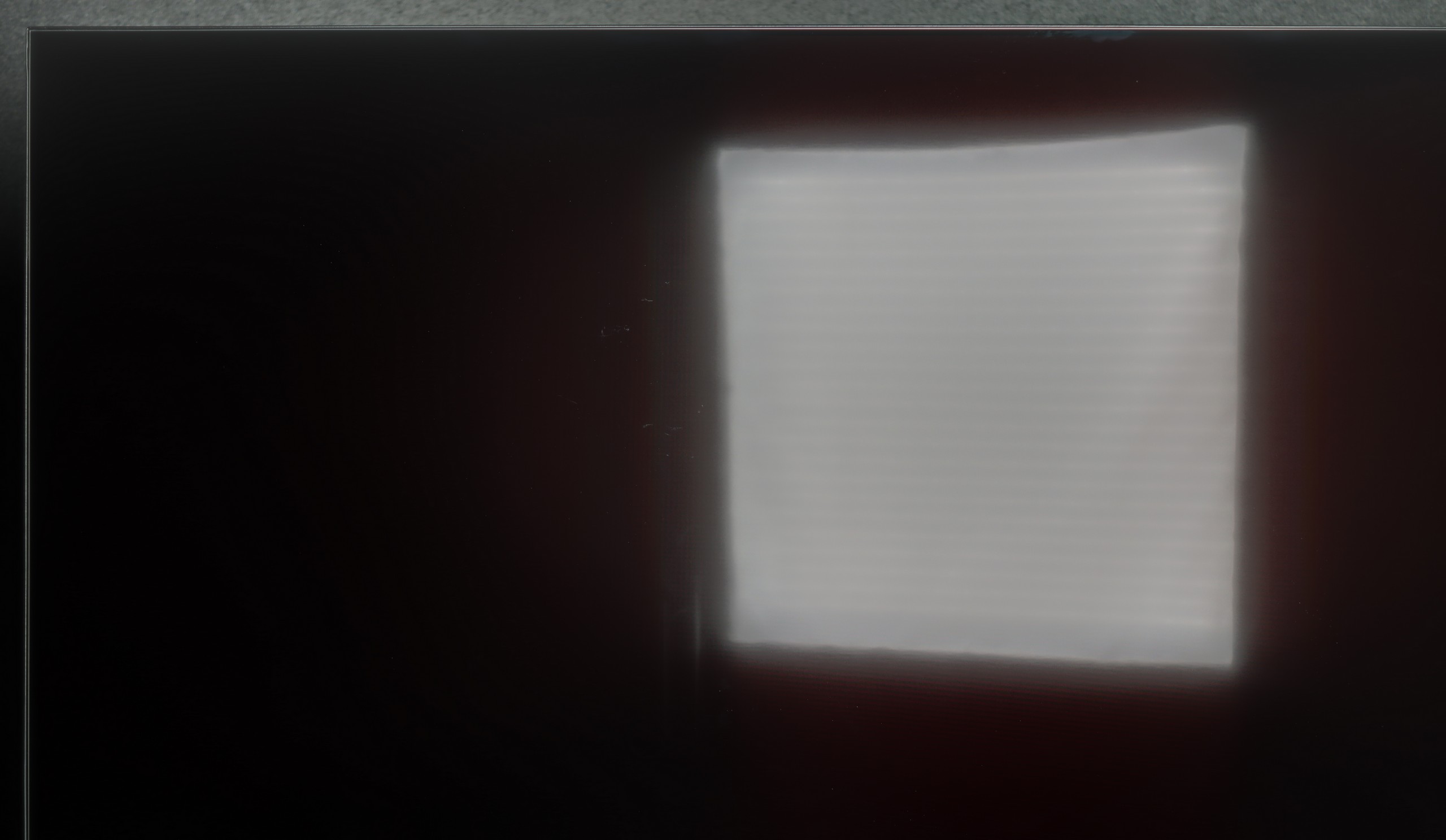
Matrix brightness
Average luminance SDR
Samsung U8000F (IPS): 218 cd/m2
TCL C75B: 366 cd/m2
TCL C75B performs okay during the day. The satin display somewhat limits reflections, but it's not an ideal solution. Brightness is also an issue – 350 cd/m² is simply not enough for comfortable viewing in a brightly sunlit room.
In less extreme conditions, for example, in a moderately lit room, the TV does alright. However, if the sun starts streaming directly onto the screen in summer, watching can become tiring. It's worth keeping this in mind when choosing this model.
Thanks to the satin coating of the Samsung U8092F display, it handles reflections quite well. The screen doesn’t act like a mirror, and the colours – for a device of this class – remain fairly saturated, even in somewhat brighter conditions. Unfortunately, the coating alone can’t work miracles. The TV is just too dark to effectively shine through very challenging lighting conditions. If we place it opposite a light source (e.g. a large window or a strong lamp) – unfortunately, we need to accept that not everything will be clearly visible on it.
Details about the matrix
Subpixel Structure:
Panel uniformity:


TV features
7.7/10
5.6/10
- HDMI inputs2 x HDMI 2.0, 2 x HDMI 2.1 48Gbps3 x HDMI 2.0, 0 x HDMI 2.1
- Other inputsRCA (Chinch)
- OutputsToslink (Optical audio), eARC (HDMI), ARC (HDMI)eARC (HDMI), ARC (HDMI)
- Network InterfacesWi-Fi 2.4GHz, Wi-Fi 5GHz, Ethernet (LAN) 100MbpsWi-Fi 2.4GHz, Wi-Fi 5GHz, Ethernet (LAN) 100Mbps
- TV receptionDVB-T, DVB-T2, DVB-S, DVB-S2, DVB-CDVB-T, DVB-T2, DVB-S, DVB-S2, DVB-C
Classic features:
- Recording to USB (terrestrial TV)
- Recording programming
- Picture in Picture (PiP)
- RF remote control (no need to aim at the screen)
- Backlit remote control
- Teletext
- Audio only mode
- Possibility to connect Bluetooth headphones to the TV
- Possibility to simultaneously use Bluetooth headphones and the TV speaker
Smart features:
- AirPlay
- Screen mirroring (Windows Miracast)
- Wyszukiwanie głosowe
- Voice search in native language
- Ability to connect a keyboard and mouse


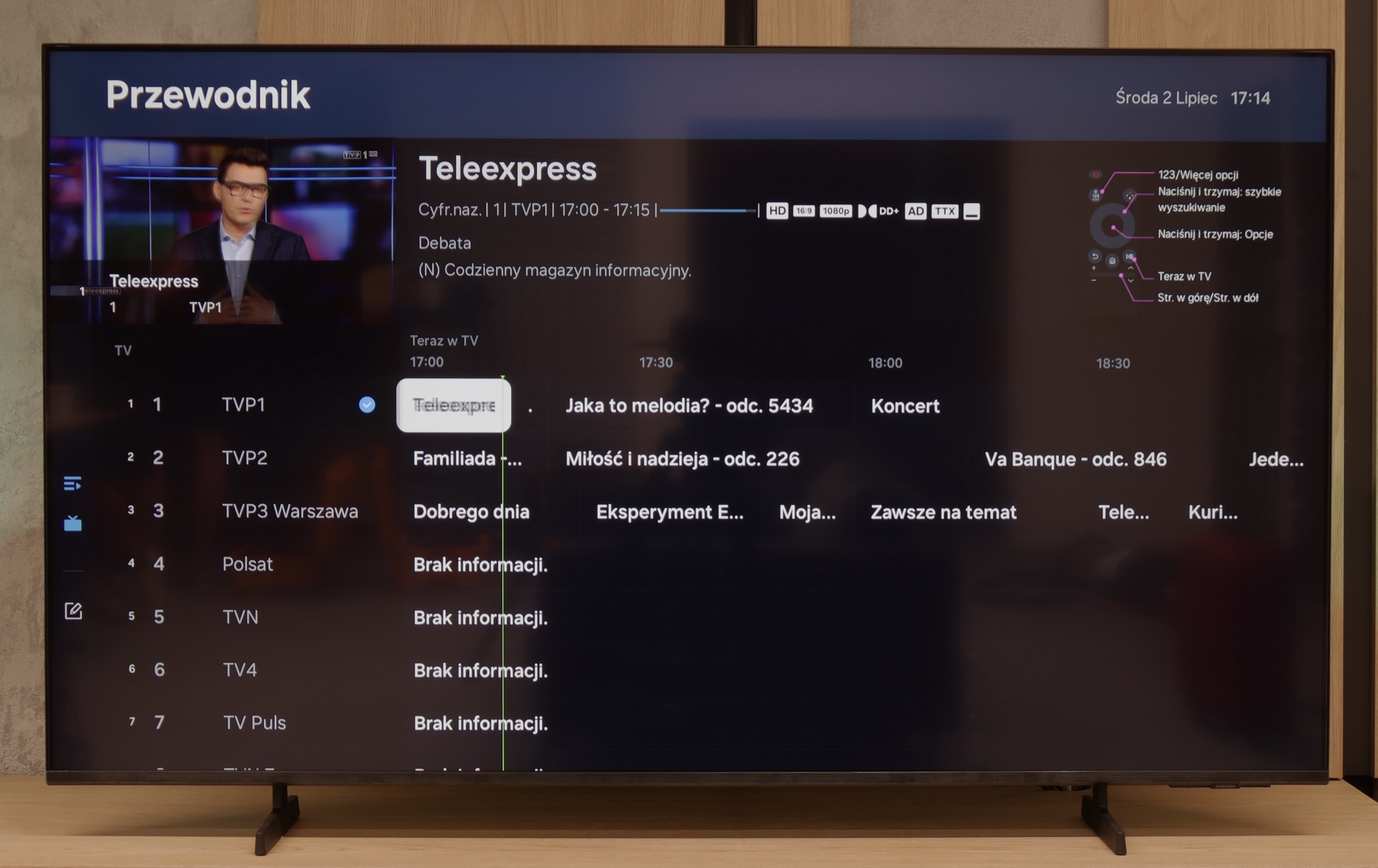

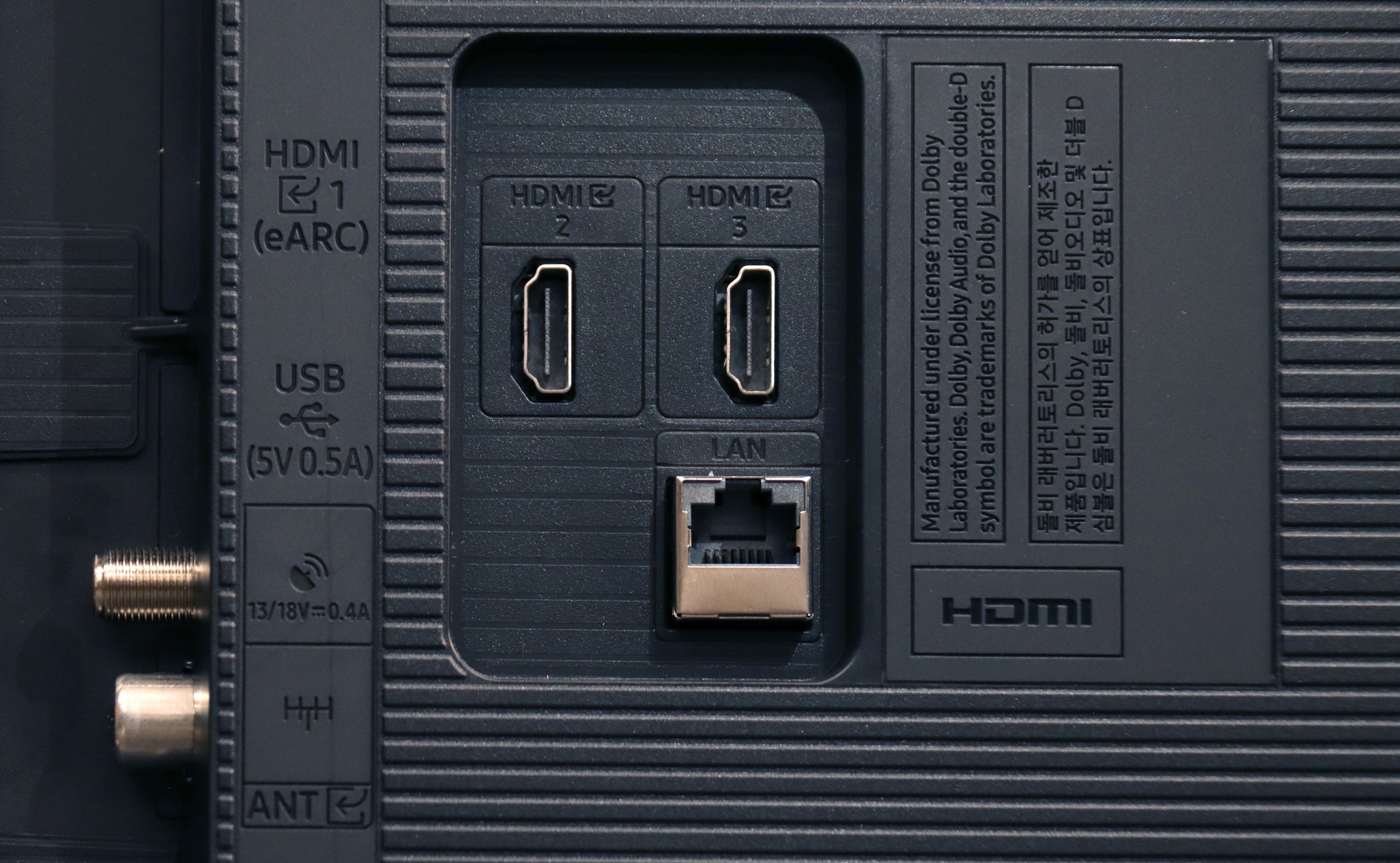
TCL C75B is a television that primarily relies on the Google TV system. The platform offers access to most popular apps, such as Netflix, YouTube, and Prime Video, making it great for watching content from the internet. However, it's worth mentioning that the system can sometimes stutter slightly, which may be noticeable during everyday use.
In terms of smart features, the C75B performs well. Voice control with the help of the built-in assistant works smoothly, and thanks to AirPlay and Miracast, we can easily transfer content from our phone or laptop. Bluetooth allows for effortless connection of headphones, controllers, or other devices.
However, anyone expecting classic television features may be disappointed. There is no option to record programmes on a USB drive or a picture-in-picture (PiP) feature. TCL has been skipping such features for some time, which may not appeal to users who mainly rely on traditional television.
Samsung U8092F – like all this year's models from this brand – runs on the Tizen operating system. The system itself is really well developed: we have access to many applications (although not all), a well-developed smart home support, and various additions, including exclusive Samsung applications. Features such as AirPlay and Chromecast are also included, allowing us to easily connect our phone to the TV and stream multimedia.
Unfortunately, as this is Samsung's cheapest series in 2025, the manufacturer did not decide to include a solar remote. In the package, we find a classic infrared remote that visually resembles a newer version, but unfortunately lacks voice functions. When it comes to typical "TV" features – it misses recording functionality and the PiP (picture-in-picture) mode. On the positive side, though, the HDMI eARC works well, allowing for easy control of the included remote with devices like a decoder or soundbar – and it really works seamlessly.
Playing files from USB
9.2/10
8.7/10
Supported photo formats:
Maximum photo resolution:

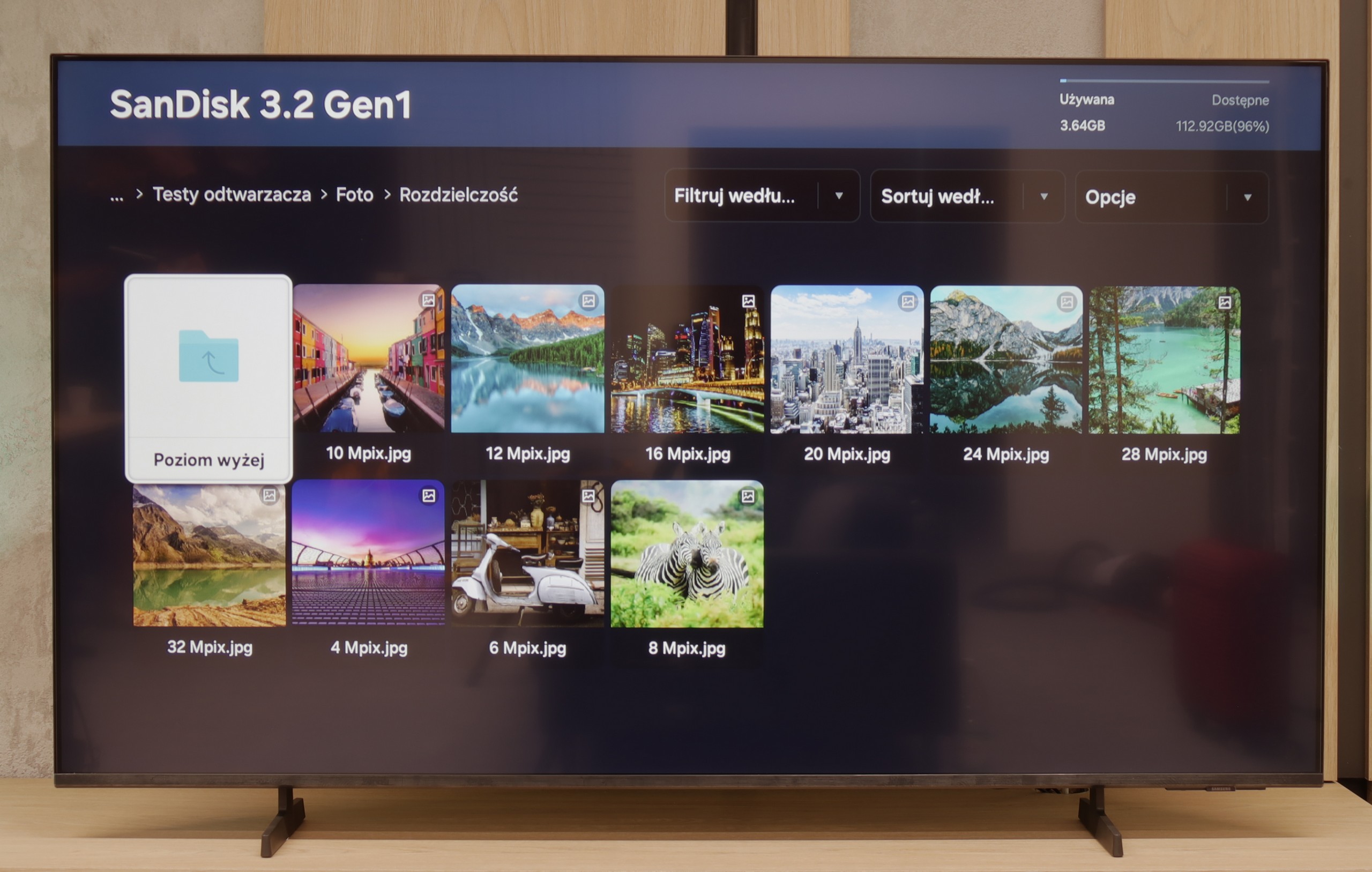
The built-in media player in TCL C75B works really well. It handles most popular image and audio formats with ease. Although there are some shortcomings in the support of certain formats, thanks to Google TV, you can easily install an alternative player that will solve this issue.
Samsung U8092F handles playback of files quite smoothly – the television supports most popular audio and video formats. Of course, it doesn’t support Dolby Vision, but you simply won’t find that in any Samsung model.
There are some reservations regarding the support for external text files – the ones that users would like to add as subtitles to a film. During our tests, the television only played TXT files, and other extensions like SRT or SUB unfortunately did not work. This may not be an issue for everyone, but it’s worth knowing. Perhaps this is a problem to be improved in the future with a software update for the television.
Apps
10/10
8.3/10














































Sound
6.6/10
5.7/10
- Subjective sound quality:6.6/105.7/10
- Dolby Digital Plus 7.1:
- Dolby True HD 7.1:
- Dolby Atmos in Dolby Digital Plus (JOC):
- Dolby Atmos in Dolby True HD:
- DTS:X in DTS-HD MA:
- DTS-HD Master Audio:
The sound on the TCL C75B is really pleasant, especially at lower volume levels. The bass is noticeable and complements the sound well, but only up to about 40% volume. At higher settings, problems start to arise – the bass causes unpleasant vibrations, and the speakers begin to crackle. If we plan to use higher volume levels more frequently, it’s worth considering purchasing a soundbar, as the built-in speakers may not meet more demanding situations.
U8092F doesn't pretend to have a home theatre on board. We get the standard set of 2 x 10 W, which sounds fine but lacks excitement, albeit with a bit of bass. For everyday viewing, this audio setup is more than adequate. We were pleasantly surprised that it managed to play a movie with the built-in Dolby Atmos (JOC) codec – though of course, we're not talking about true surround sound here.


